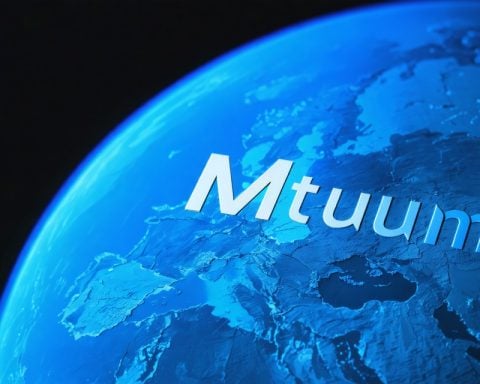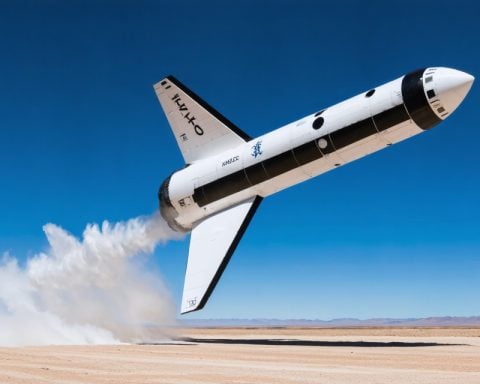- Brevard County hosted a spectacular SpaceX Falcon 9 launch on Saturday, marking a significant event in aerospace.
- The launch successfully deployed 21 Starlink satellites, improving global internet connectivity.
- Among the satellites launched, 13 are equipped with innovative direct-to-cell technology.
- This particular Falcon 9 mission featured its first-stage booster, which has now flown 17 times.
- The booster returned safely, landing on the drone ship in the Atlantic, demonstrating successful reuse of hardware.
- Two more Falcon 9 launches are scheduled for February 11 and February 17, with one aiming to land off the Bahamas.
This past weekend, all eyes were on Brevard County, not just for the Super Bowl but for an electrifying SpaceX launch that lit up the skies! The weekend excitement kicked off with a thrilling Falcon 9 rocket lift-off on Saturday afternoon, as it successfully dispatched a new fleet of 21 Starlink satellites into orbit, enhancing global internet connectivity.
Originally slated for Friday, a minor delay pushed the launch back by a day. But at precisely 2:18 p.m., the Falcon 9 roared to life at Cape Canaveral Launch Complex 40, gracefully ascending towards the heavens. Among the batch were 13 remarkable satellites equipped with direct-to-cell technology, a game-changer for internet access.
This impressive mission marked the 17th flight for its first-stage booster, a veteran of the skies that had previously completed 12 Starlink missions alongside various NASA and military operations. Just eight and a half minutes after liftoff, the booster triumphantly returned, landing on the drone ship “A Shortfall of Gravitas” in the Atlantic, captured in stunning video against a backdrop of bright blue skies.
But hold onto your hats—this is just the beginning! Another Falcon 9 launch is set for February 11, and yet another on February 17. This future mission will create history, marking the first time a Falcon 9 lands on a drone ship off the coast of the Bahamas.
Get ready, space enthusiasts! The only thing soaring higher than these rockets is the thrill of discovery.
SpaceX Soars Again: What’s Next After the Latest Launch?
Brevard County was buzzing with excitement this past weekend, not only for the Super Bowl but also for a spectacular SpaceX launch that dazzled viewers. The Falcon 9 rocket took flight, successfully deploying 21 new Starlink satellites into orbit, significantly boosting global internet connectivity.
The launch, originally scheduled for Friday, was delayed due to minor issues. However, at the precise time of 2:18 p.m. on Saturday afternoon, the Falcon 9 ignited the engines at Cape Canaveral Launch Complex 40, marking another successful mission for SpaceX. Notably, this payload included 13 satellites featuring pioneering direct-to-cell technology, aimed at revolutionizing internet access for users everywhere.
This particular mission was significant as it utilized a first-stage booster that had previously flown 16 times, exemplifying SpaceX’s commitment to reuse and sustainability. Just eight and a half minutes post-launch, the booster made a triumphant landing on the drone ship “A Shortfall of Gravitas,” showcased in stunning visuals against a magnificent backdrop.
Key Insights and Trends
– Launch Frequency and Trends: SpaceX is ramping up launch frequency, with two more Falcon 9 missions scheduled for February 11 and February 17. Notably, the February 17 launch aims to achieve a historic landing off the coast of the Bahamas.
– Technological Innovations: The inclusion of direct-to-cell technology in the new Starlink satellites represents a significant advancement in how satellite communications can directly enhance mobile connectivity.
– Sustainability Initiatives: Reusing rocket components not only cuts costs but also minimizes waste, aligning with growing industry trends focused on sustainability.
Frequently Asked Questions
1. What are Starlink satellites, and how do they work?
– Starlink satellites are part of SpaceX’s initiative to provide high-speed internet globally. They orbit the Earth and communicate with ground stations and user terminals, offering coverage even in the most remote areas.
2. What is direct-to-cell technology?
– Direct-to-cell technology allows satellites to communicate directly with mobile phones, enabling internet access without the need for traditional ground-based infrastructure, which is crucial for connecting underserved regions.
3. What are the plans for future Falcon 9 launches?
– SpaceX has a busy schedule with multiple planned launches aimed at increasing satellite coverage and continuing to explore possibilities for interplanetary missions. The upcoming launches will also focus on enhancing global internet connectivity.
For more information on SpaceX and its innovative technology, visit SpaceX.









